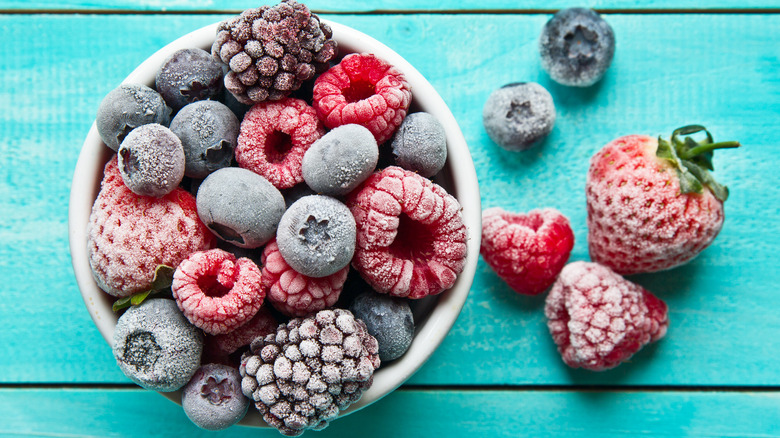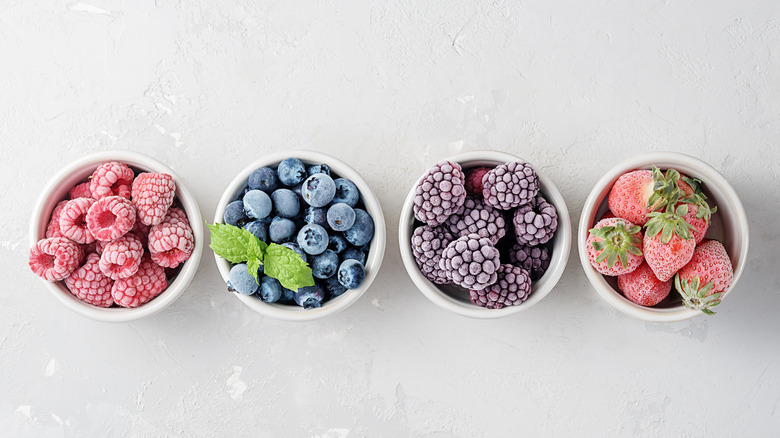The One Step You Should Take Before Using Frozen Berries
Frozen fruit can be a great kitchen hack. You never (or almost never) have to worry about it spoiling, so you can keep it stockpiled in your freezer, ready to throw it in a smoothie or pop it in a baked good at a moment's notice. Well, maybe not so much on the berries as it turns out. You may want to think twice before tossing those frozen strawberries into your easy peanut butter and jelly smoothie recipe.
But that doesn't mean you should do away with frozen berries altogether. Frozen fruits and veggies have the great advantage of longevity and are often less expensive, according to the AARP. That's particularly true for often pricey berries. For example, fresh blueberries at supermarket chain Shaw's run $7.99 for an 18 oz package while you can buy a mammoth 48 oz bag of frozen berries for only $2 more, $9.99 (per Shaw's). And there's a simple way to make them usable again.
Not-so-fresh fruit
The problem with frozen berries is that they can carry bacteria from the hands that picked them, the processing plant, and the water they were washed in if they are imported berries (per WebMD). You may think freezing kills bacteria, but it only arrests its growth temporarily (via Daymark Safety). You can sidestep this potential food safety hazard in two ways. The first is to boil your berries for a few minutes. This will terminate any lingering nasties that could have been waiting on your fruit, but it will change the flavor (via Quirky Science). Which is fine if you're making filling for a blueberry pie recipe, but not ideal for smoothies.
If you want the particular taste of fresh blueberries, strawberries, cherries, blackberries, or raspberries, go for American-grown berries. If you don't see a country of origin, assume they're imported. However, commonly available brand Wyman's are grown in Maine and offer raspberry, cherry, strawberry, wild blueberry, and mixed berry with blackberry options for those who want that fresh berry flavor.

